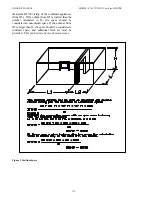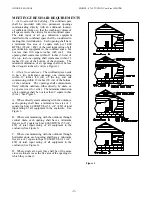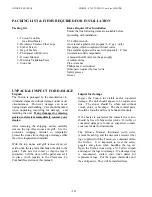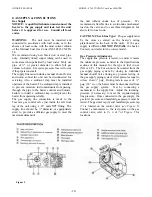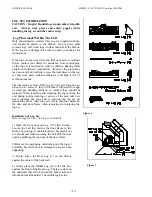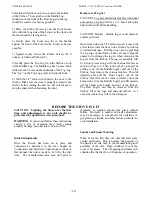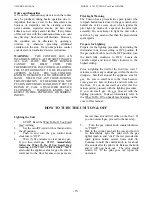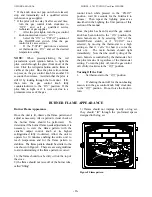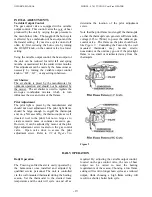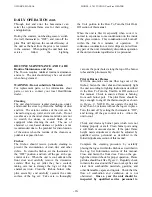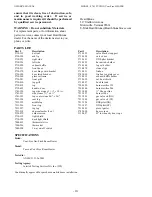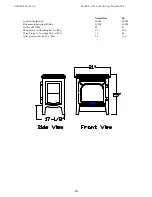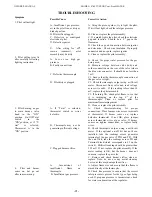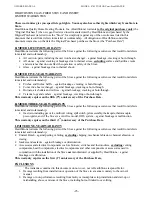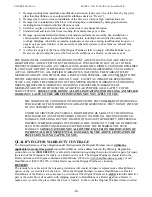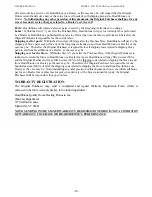
OWNER’S MANUAL MODEL: 8745 TUCSON Vent-Free HEATER
-22-
TROUBLESHOOTING cont.
Symptom
5. Frequent pilot outage
problem.
6. Glass fogs
7. Blue Flames
8. Floating flames, lazy
ill-defined, quiet flames
which roll around,
sometimes completely
off of the port,
sometimes with overly
yellow tips). Possible
sooting. Usually
accompanied by the
odor of aldehydes.
9. Burner Flashback.
Air-gas mixture ignites
inside the burner near
the orifice, usually
creating a roaring noise
like a blow torch. The
problem is an imbalance
of gas flow velocity and
burning speed pattern.
10. Delayed ignition
(makes a sudden
“whoosh” noise as the
burner lights).This is a
buildup of gas’s prior to
ignition. This is more
prevalent with propane
(LP) fuel.
Possible Cause
A. Pilot may be too low or
blowing, (high), causing the pilot
safety to drop out.
A. A normal result of gas
combustion.
A. A normal result during the first
20 minutes.
A. Potentially dangerous
incomplete combustion due to
incorrect air to fuel ratio (lack of
combustion air or excessive fuel
delivery i.e. excessive gas pressure,
overrating of appliance).
B. Incorrect air intake/exhaust
flow system. Causes may be:
B1. Blocked burner
B2. Blocked primary air
B3. Blocked secondary air inlets
B4. Plugged catalytic combustor
A. Excessive.
B. Burner input underrated.
C. Valve leak if flashback occurs
with burner valve in off position
D. Improper gas pipe size
A. Incorrect air-to-fuel ratio.
A1. Primary air incorrect
A2. Burner ports plugged
B. Pilot not positioned properly
C. Improper log placement
Corrective Action
A. Clean and/or adjust the pilot flame for
maximum impingement on the thermopile
and thermocouple.
A. After the heater has warmed up, the glass
should clear.
A. Flames should begin to turn more
yellowish after 20 minutes of burning.
A. Check the appliance input rate and
reduce if necessary. The air intake/exhaust
flow system may be too restrictive or
blocked (the rate at which the exhaust leaves
[draft] determines the rate at which the
combustion air is delivered). Poor draft
results in insufficient air delivery or a
restricted exhaust. Correct air
intake/exhaust flow system.
B1. Clear ports
B2. Clear obstructions
B3. Clear obstructions.
B4. Replace catalytic combustor
A. Set primary air to factory setting.
B. Check input rate. Check input pressure
using a manometer. Confirm correct gas
pressure at house meter or tank (call gas
company). Confirm burner orifice size.
C. Replace valve. If above corrections do
not eliminate flashback, replace burner.
D. Correct plumbing
A1. Set primary air to factory setting
A2. Open ports to allow for proper travel of
flames.
B. Adjust pilot location so it is close enough
to light ports on burner tube.
C. Reposition logs to eliminate interference
with flame travel

